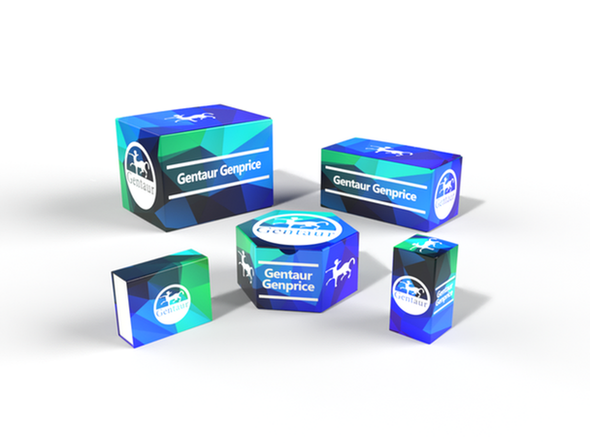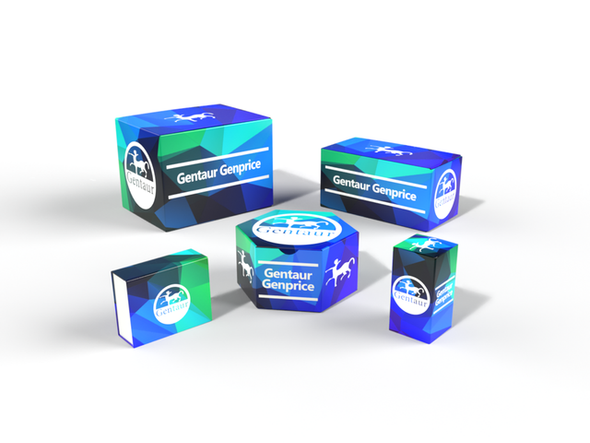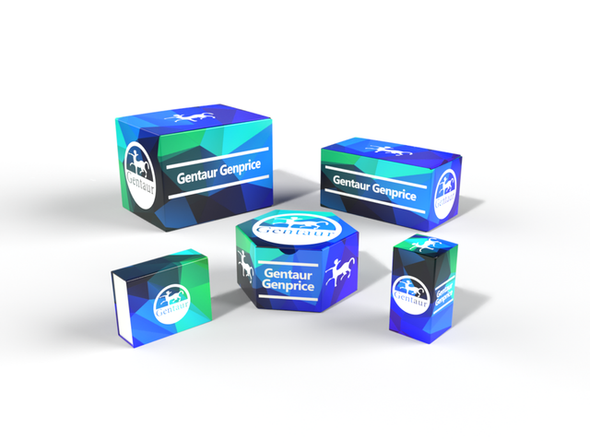Description
AIF Antibody | 2301 | Gentaur UK, US & Europe Distribution
Host: Rabbit
Reactivity: Human, Mouse, Rat
Homology: N/A
Immunogen: Anti-AIF antibody (2301) was raised against a peptide corresponding to 14 amino acids near the carboxy terminus of human AIF.
The immunogen is located within the last 50 amino acids of AIF.
Research Area: Apoptosis, Cancer
Tested Application: E, WB, ICC
Application: WB: 0.5-2 μg/mL; ICC: 5 μg/mL.
Antibody validated: Western Blot in human, mouse and rat samples; Immunocytochemistry in human samples. All other applications and species not yet tested.
Specificiy: Multiple isoforms of AIF are known to exist.
Positive Control 1: Cat. No. 1204 - K562 Cell Lysate
Positive Control 2: Cat. No. 1205 - Jurkat Cell Lysate
Positive Control 3: Cat. No. 17-005 - Jurkat Cell Slide
Positive Control 4: Cat. No. 17-004 - K-562 Cell Slide
Positive Control 5: N/A
Positive Control 6: N/A
Molecular Weight: Predicted: 67kD
Observed: 68kD
Validation:
Independent Antibody Validation in Cell lines (Figure 2) shows similar AIF expression profile in human and mouse cell lines detected by three independent anti-AIF antibodies that recognize different epitopes, 2267 against central domain, 2239 against N-terminus domain and 2301 against C-terminus domain. AIF proteins are detected in the most tested cell lines at different expression levels by the three independent antibodies.
KD Validation (Figure 6, 7) : Anti-AIF antibody specificity was further verified by AIF specific knockdown. AIF signal in H1299 cells and AIF stable cells transfected with AIF siRNAs was disrupted in comparison with that in cells transfected with control siRNAs.
Localization Validation (Figure 9) : AIF detected by anti-AIF antibodies is colocalized with Mitotracker (mitochondrion marker) . AIF is localized in mitochondria.
Induced Expression Validation (Figure 10) : AIF expression detected by anit-AIF antibodies was up-regulated by Magnolol treatment.
Isoform: Human AIF has 6 isoforms, including isoform 1 (613aa, 67kD) , isoform 2 (326aa, 36kD) , isoform 3 (609aa, 66kD) , isoform 4 (324aa, 35kD) , isoform 5 (261aa, 28kD) , and isoform 6 (237aa, 26kD) . Mouse AIF has one isoform (612aa, 67kD) and Rat AIF also has one isoform (612aa, 67kD) . 2301 can detect 4 human isoforms (1, 2, 3, 5) and also can detect mouse and rat AIF.
Purification: AIF Antibody is affinity chromatography purified via peptide column.
Clonality: Polyclonal
Clone: N/A
Isotype: IgG
Conjugate: Unconjugated
Physical State: Liquid
Buffer: AIF Antibody is supplied in PBS containing 0.02% sodium azide.
Concentration: 1 mg/ml
Storage Condition: AIF antibody can be stored at 4˚C for three months and -20˚C, stable for up to one year. As with all antibodies care should be taken to avoid repeated freeze thaw cycles. Antibodies should not be exposed to prolonged high temperatures.
Alternate Name: AIF Antibody: Apoptosis-inducing factor 1, Programmed cell death protein 8, AIF, PDCD8
User Note: Optimal dilutions for each application to be determined by the researcher.
BACKGROUND: AIF Antibody: Apoptosis is characterized by several morphological nuclear changes including chromatin condensation and nuclear fragmentation. These changes are triggered by the activation of members of caspase family, caspase activated DNase, and several novel proteins. A novel gene, the product of which causes chromatin condensation and DNA fragmentation, was recently identified, cloned, and designated apoptosis inducing factor (AIF) . Like the critical molecules, cytochrome c and caspase-9, in apoptosis, AIF localizes in mitochondria. AIF translocates to the nucleus when apoptosis is induced and induces mitochondria to release the apoptogenic proteins cytochrome c and caspase-9. AIF induces chromatin condensation and DNA fragmentation, which are the hallmarks of apoptosis, of the isolated nucleus and the nucleus in live cells by microinjection. AIF is highly conserved between human and mouse and widely expressed.










